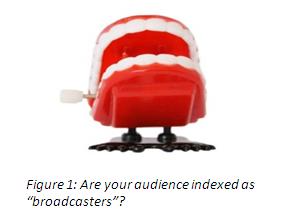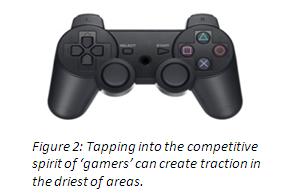Evidence-based digital communication

In this article, Kate Reynolds discusses the potential of digital for pharma marketers and how they can become smarter in order to stand out in the crowd.
How much do you know about what your audiences do online?
Chances are you are a pretty savvy marketer and if you're involved in developing digital programmes, I imagine you know a fair bit about how your audience behaves with digital. I imagine you know what sites and apps they use, what devices they use, what they're interested in searching for. If not, you can take a look using free tools and data to figure this out fairly quickly. If you're stuck, we can point you in the right direction.
So why get smarter?
Well, I also imagine you know about as much as your competition, which means your strategies are likely to be on a par too. Not great for competitive advantage. Beyond an understanding of channel and device use, if you don't know your audience's style of digital interaction, are you wasting an opportunity to communicate effectively?
Creating digital solutions that are more suited to specific audiences' digital interactions styles is not only smart from a communications point of view, but it makes sound financial sense too.
There's no doubt that people are investing more of their marketing budget in digital comms than ever before. But with growing budgets comes increased responsibility and increased potential for wastage. So how can you ensure you are spending your precious budget in the right place?
Smart marketers are calling for a stronger evidence-base on which to make decisions that predict which activities are likely to have the greatest effect. They're thinking about the return before the investment.
What's the potential?
Digital has the power to create the most sophisticated interactions with our customers. But the problem is, your customers are as unique and different as you and I are from each other. If we can get to know your audiences as the individuals that they are we can build a stronger evidence-base on which to make decisions on what activities will have the greatest effect.
So how can you know what will work and what won't?
To a certain extent we can learn from the past by reviewing channels and activities that have performed well with a particular audience. And this is part of the solution. But one problem with looking back, is it keeps us stuck in the past and doesn't future proof today's choices.
By building digital strategies based on an understanding of your audience's natural behaviour and preferences in terms of their digital interaction styles we can be predictive about the most effective type of digital assets to invest in for the future.

If, on the other hand, they are 'lurkers' you might never know that they are there, as they'd rather slink back and watch what's going on, curious to see what others have to say. Give them a forum and they'll value hours exploring other opinions but never say anything themselves.

There are nine distinct behaviour styles which may be exhibited to a greater or lesser extent in any individual which can be identified using quantitative profiling techniques. These digital behaviour profiles become increasingly relevant when we study your audience in the context of the changing digital environment they are operating in.
By understanding these natural behaviours and preferences, you can make decisions based on evidence regarding which type of interactions your digital assets should allow and which simply are not worth investing in.
Sorting the wheat from the chaff
Over the last few years the pharma industry's capability to deliver digital programmes has sky-rocketed. What is interesting to see now is that those with the deeper digital insights are starting to plan their digital strategies more effectively and get ahead in the race. We say good luck to them. They deserve to win.
About the author:
Kate has worked in healthcare communications for 12 years with the last five specialising in digital strategy and innovation. With a Natural Sciences degree from Cambridge and a brief time teaching in secondary schools, Kate went on to join Omnicom's Healthcare Communication Accelerate Programme working across specialist healthcare agencies in PR, branding, DM, market research, CRM and public affairs before joining TBWA Paling Walters in healthcare advertising.
Prior to setting up eBee in 2009, Kate spent 6 months working at GSK as an expert marketer for the launch of alli. eBee is a specialist digital healthcare agency that develops evidence-based communication strategies built from an understanding of the unique relationships that different audiences have with digital.
How can you make your digital pharma strategy more successful?












